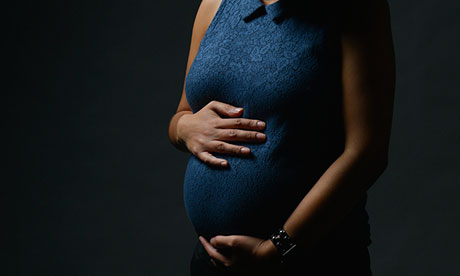World first as woman gets pregnant seven years after ovaries removed
Twin girls expected after Australian scientists graft tissue frozen before cancer treatment on to mother's abdominal wall

Australian doctors and scientists have achieved a world first, helping a woman to become pregnant seven years after her ovaries were removed during cancer treatment, by grafting frozen tissue on to her abdominal wall.
Researchers from Melbourne IVF and the Royal Women's hospital have given hope to cancer survivors who develop menopause after treatment, after achieving the world's first pregnancy from the process.
Just before surgery removed her second ovary, Brisbane woman Vali, 24, whose surname was not released, asked doctors to preserve some of her ovarian tissue in case it was possible to graft it back in the future.
She said it had been "pretty confronting" to have found out at a young age that she might not have been able to have children.
"It didn't really hit me until I was ... 24 and I had to make some serious decisions about my healthcare then," she said. "I was really lucky with my doctors. I was able to have this opportunity even though I didn't really know anything about it."
She and her partner, Dean, moved to Melbourne so she could undergo the treatment.
Associate professor Kate Stern, head of fertility preservation at Melbourne IVF, said: "We checked the tissue again, checked with her surgeon, made sure that everything was OK and spoke with her oncologist, talked with her about the risks."
They did a first graft in 2010 and a second two years later.
"The tissue was put back in the front wall of her abdomen, so that means it's under the skin and the muscle but not inside the abdomen," Stern said.
"We wanted to see if this might help her get pregnant. Then we gave her some very gentle hormone stimulation – not the full-on IVF." .
The process produced two eggs, which were then fertilised and put back in Vali's uterus. The couple are now expecting twins.
"[We're] having two girls. I'm pretty excited,'' Vali said.
Stern said the likelihood of success when they began the process was small. "It was unlikely," she said.
"There have been 29 babies born in the world [using this procedure] – but that's all from tissue that's been grafted back into the ovary or close to the ovary. But still, with that 29 there have been multiple, multiple, multiple attempts.
"You'd never consider that this was a routine procedure or guaranteed success. You'd never think that."
The process is potentially applicable to other women who have had their tissue removed. Of the approximately one in 570 young women who will have cancer, Stern said "many of those patients they will be at risk of developing premature menopause from their cancer treatment".
Stern said there was a big team of people behind the breakthrough.
"It's amazing how everyone is so excited for our patient. We've been doing this for a long time now, so it's taken a while to get to this point."
THEGUARDIAN
Labels: global

0 Comments:
Post a Comment
if you don't have any ID please select "anonymous"
Subscribe to Post Comments [Atom]
<< Home